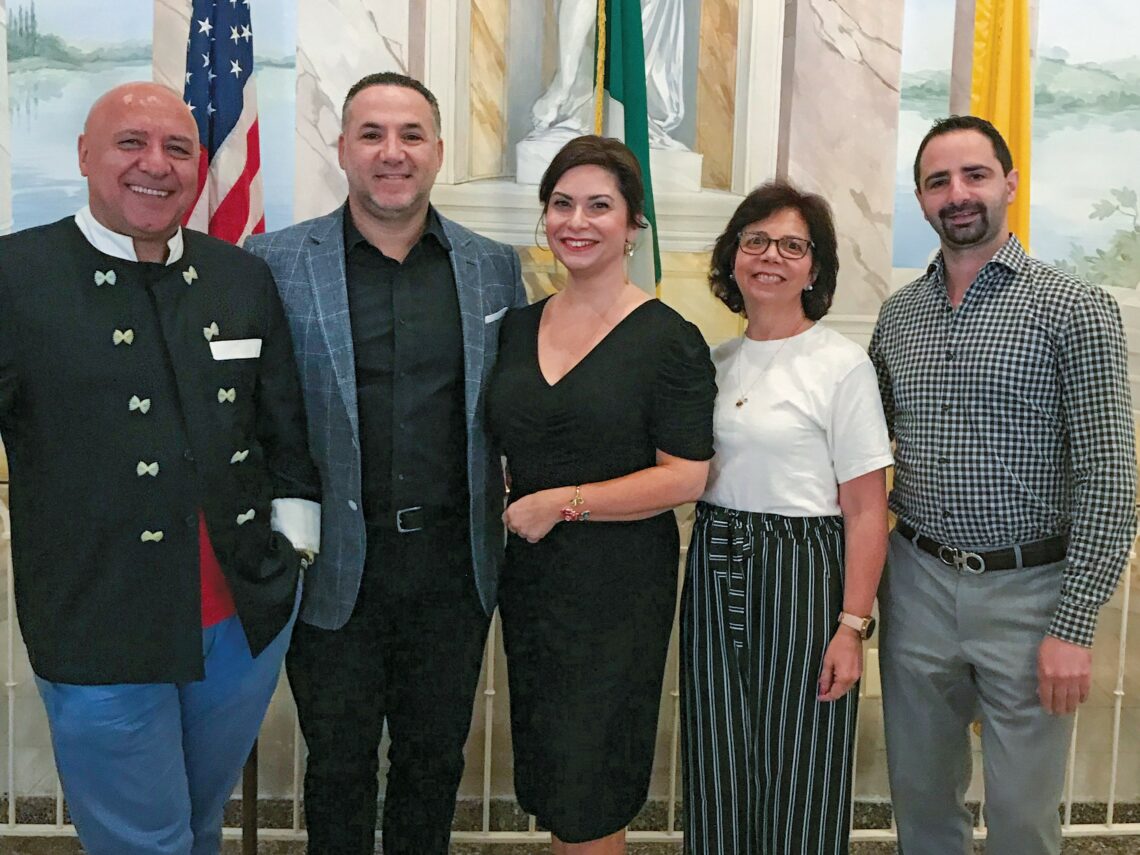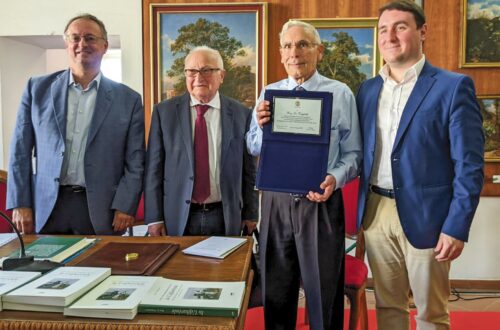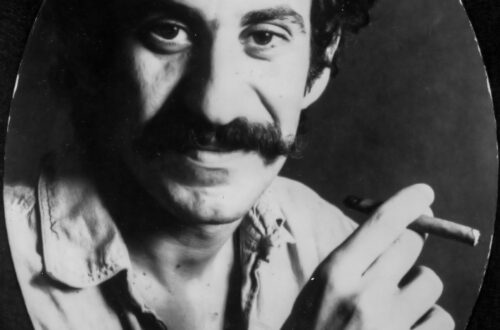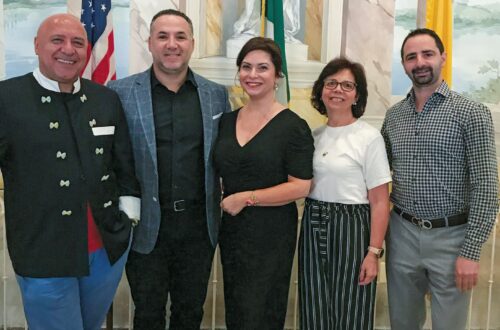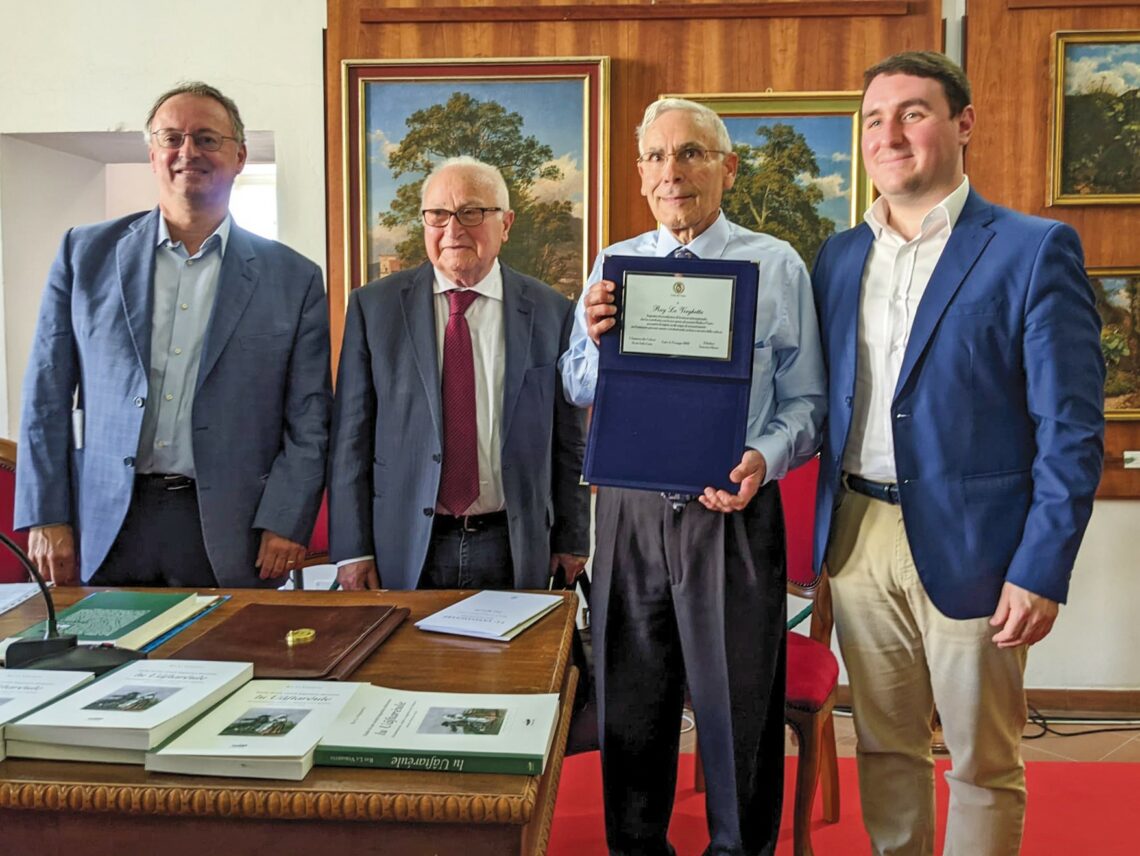-
Experts Explain Why Italian Food is So Good for Us
By Nancy DeSanti
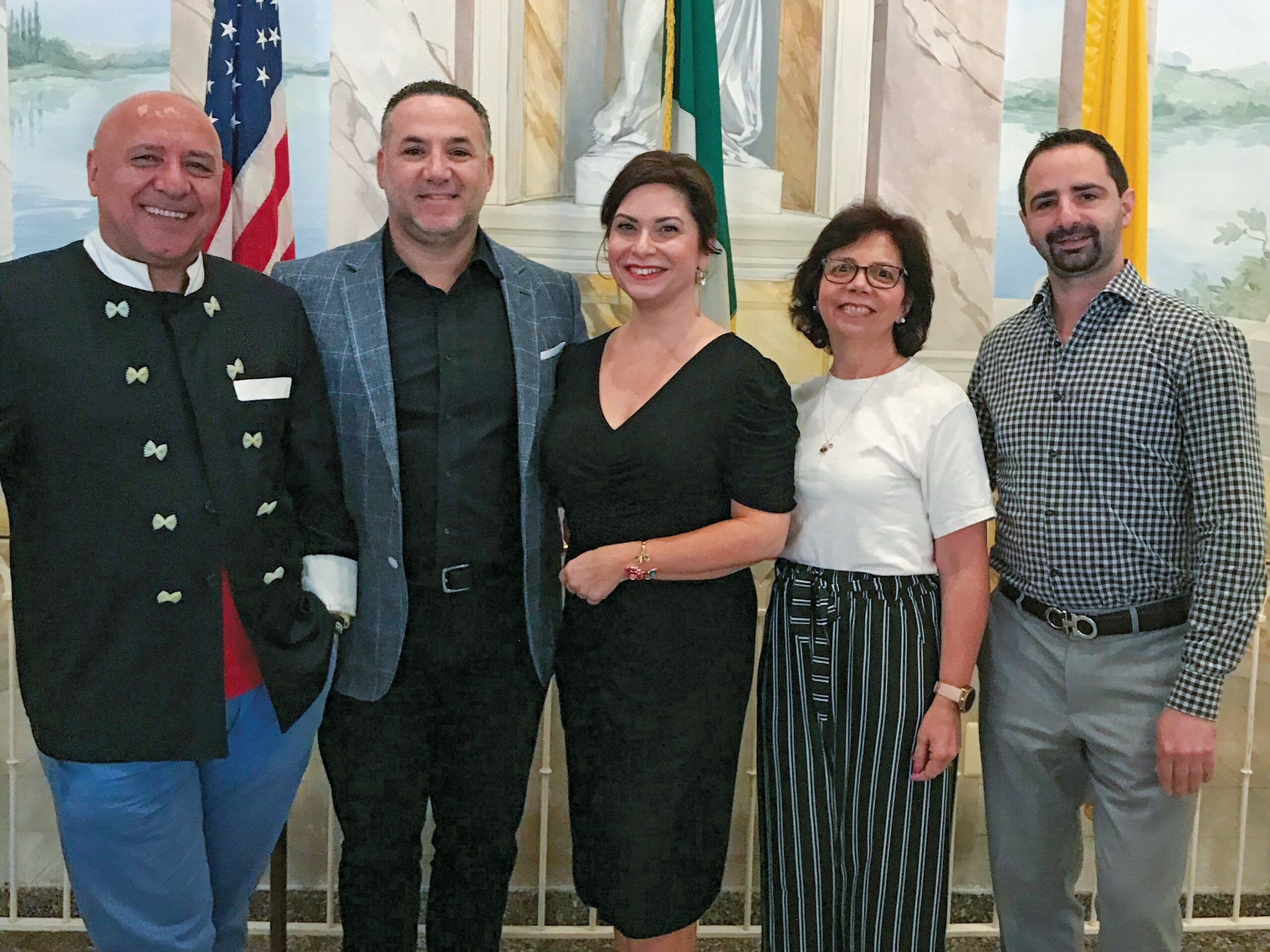
The panel of Italian cuisine experts at the AMHS’ May 15 meeting: (left to right) Luigi Diotaiuti, Francesco Marra, Amy Riolo, Diane Welland and Stefano Ferrari.
Credit: Francesco IsgroThe second in-person program for 2022 at Casa Italiana on May 15 was a successful and fun event. About 80 AMHS members and guests enjoyed a lively panel discussion on why Italian cuisine is not only delicious but nutritious and healthy too.
The event was organized by AMHS, with the Casa Italiana Sociocultural Center Inc. and the Casa Italiana Language School as co-sponsors.
The panel’s moderator was Amy Riolo, a best-selling author, chef, television personality and expert on the Mediterranean Diet who has taught cooking classes at Casa Italiana. Her distinguished panel included top chefs and experts in Italian cuisine.
As if to prove the point that pasta is good for you, three of the panelists were also athletes.
Marathon runner Luigi Diotauiti is an award-winning chef from Basilicata and owner of Al Tiramisu restaurant. Luigi hosts pasta labs in Basilicata and on October 25, which is World Pasta Day, he said a big event will be held there to talk about grain, which may be in short supply due to the Russian invasion of Ukraine, which are both primary sources of grain.
Luigi said since pasta is easy to digest, it provides energy for marathon training. He told us he has run marathons on every continent except Antarctica, but he is on the waiting list for that one.
Former professional water polo player Francesco Marra is a chef trained in Napoli who co-founded Marra Forni which sells artisanal brick ovens. He also started Pizza University culinary center and heads the catering company that runs the café in the Embassy of Italy.
Francesco said some of our best memories are of being around the table, because there is a sentiment of joy, passion and love. He said one of his fondest memories is catching sea urchins with his grandfather on a boat in Sorrento.
He called pizza a “gift to humanity” and noted that we have 60,000 pizzerias in the U.S.
Francesco’s mother, who accompanied him, invited us to come to dinner at her house, and somebody shouted, “We come!!”
Former pro basketball player and coach Stefano Ferrari, from Magenta in northern Italy, is a co-founder of the gourmet Italian import company Cibo Divino. He said he had promoted Italian food products in Bedford, Pa., where there wasn’t much of an Italian-American presence.
Stefano joked that the cardinal sin is pasta swimming in sauce. He predicted that more organic pasta will be coming from Italy, and he mentioned that the new legume pasta, made from peas and chickpeas, is becoming popular.
The final panelist was Diane Welland, the Italian-American nutritionist with the National Pasta Association. Diane was familiar to some AMHS members who recall the talk she gave to us in April 2018.
Diane had some good news — she debunked the myth that pasta causes weight gain, and she said she has the research to prove it. In fact, it’s just the opposite, especially for women. Of course, it’s important to watch the portion size. She noted that a one-half cup serving of cooked pasta like spaghetti contains less than 100 calories, less than a half gram of fat and less than 5 milligrams of sodium. She also said it’s not true that you shouldn’t eat pasta if you are a diabetic or have heart problems.
Diane said more details and recipes can be found on the website sharethepasta.org. The website also has fun facts about some of the 600 pasta shapes and about some interesting statistics, such as that the average American consumers 20 pounds of pasta annually. Collectively, the U.S. public consumes 5.95 billion pounds of pasta per year.

Amy Riolo
Credit: metrocookingdc.comIn closing the program, Amy cited this quote from Sophia Loren, well known for her love of pasta: “Una donna che sa fare la pasta a regola d’arte ha un prestigio che resiste anche oggi a qualsiasi altro richiamo dei tempi.“ (“A woman who knows how to make pasta to perfection has a prestige that supersedes even today any other lure of the times.“)
AMHS members may be interested to know that Amy has also forged connections with food experts in Abruzzo and Molise. She is the managing director of Italian Sensory Experience LLC, a marketing and business consultancy company that works alongside Italian wine and food companies, supporting them in the process of promoting their products in foreign markets. ISE LLC is an American company, but Amy noted that co-founders Francesco Giovannelli from Abruzzo and Antonio Iuliano from Molise are experienced in both the Italian and North American food and beverage industries. She said the team is experienced in social media marketing, web marketing services, communications, public relations, and creating new sales channels. Amy invited any American importers, restaurateurs, or distributors who would like to work directly with artisan producers in Abruzzo and Molise, to contact her at amy@amyriolo.com. A delicious lunch was catered by Fontina Grille. A big thank you to all those who helped serve the lunch and to those who donated raffle prizes and purchased tickets.
July/August 2022
-
A Message from the President

Dear members and friends:
By the time you read this message, you will be in the early days of summer. While it is a new season, it might just bring to mind those lazy, hazy, crazy days of summer that have become part of our past. Hopefully, this summer you will be able to make new memories of enjoyable days filled with vacations, get-togethers, good times and a slower pace of life.
Speaking of a slower pace, the AMHS typically reduces its activities over the summer, recognizing that many of our members travel to Italy or head out of town to visit family and friends. Of course, we are still planning our annual Ferragosto picnic in August. This year it will take place on August 14th at Fort Ward Park in Alexandria, Virginia. See page 16 for additional details.
Our latest general meeting took place on May 15th. The program was called “For the Love of Pasta: Preserving Italian Cuisine, Culture and Health” and featured author and chef Amy Riolo as well a panel of five food experts. The food, prepared by Fontina Grille, was really an excellent accompaniment to a food-themed event. The day was both informative and enjoyable – not surprising, given the presence of Amy Riolo and her extremely knowledgeable panel. All of this added up to another successful program aimed at informing and entertaining our AMHS members and friends.
As most of you know, every year the AMHS awards a scholarship to two outstanding students based on their academic performance and their interest in the Italian language and culture. This year, as has often been the case, every applicant had remarkable academic credentials, strong Italian language skills, and was in every case an enthusiastic ambassador of Italian culture. With only two scholarships available, how does one differentiate the applicants in order to select the winners? That was the task of the AMHS Scholarship Committee, which spent quite a few hours in the month of April reviewing applications and evaluating the applicants. The Committee ultimately selected William DiGiovanni, a rising sophomore at Georgetown University, and Marcella Finelli, a rising senior at the University of Maryland, as the 2022-2023 academic year AMHS scholarship winners. You can find out more about them, read their thank you letters to the Society, and see their photos in a separate article in this edition. Their interests and abilities are precisely what our Society wants to nourish, as they align with the goals set forth at our inception of preserving and promoting the Italian language and culture and passing it on to future generations. Our members, and especially our donors, should feel a sense of pride and satisfaction in reading about our winners, as it is member donations alone that make the scholarship program possible.
Stay tuned for more information on plans for our Ferragosto picnic as well as news regarding upcoming programs and updates to our constantly improving website. Thank you for reading and for your interest in the AMHS.
Have a great summer!
Best regards,
Ray LaVerghettaJuly/August 2022
-
Father of Scholarship Winner Speaks at Falcone Commemoration
By Nancy DeSanti
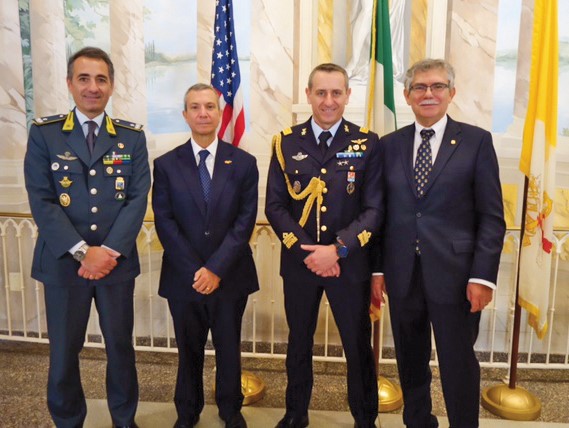
Pictured at the event honoring Judge Giovanni Falcone are: (left to right) Brigadier General Salvatore Russo, Guardia di Finanza Attache, Embassy of Italy; retired FBI Special Agent Carmine Nigro; General Maurizio Cantiello, Defense Attache, Embassy of Italy; and Francesco Isgro, CISC President and AMHS member.
Photo courtesy of Francesco Isgro
Retired FBI Special Agent Carmine Nigro was the guest speaker at an event commemorating the 30th anniversary of the assassination of anti-Mafia Judge Giovanni Falcone. Carmine is the father of Gianluca Nigro, a 2017 NIAF/AMHS scholarship winner.
Gianluca’s father spoke at a reception held on May 22, 2022, in Casa Italiana which followed a Mass in Holy Rosary Church attended by officials from the Embassy of Italy — Brigadier General Salvatore Russo, the Guardia di Finanza Attache, and General Maurizio Cantiello, the Defense Attache. This year’s ceremony, hosted by the Casa Italiana Sociocultural Center Inc., was co-sponsored by several organizations, including the AMHS.
CISC President and AMHS member Francesco Isgro opened this year’s program by introducing the special guest speaker. For many years, working out of the New York and Washington, D.C., field offices, Carmine Nigro was closely involved in investigating the Cosa Nostra and organized crime. He also served as the assistant legal attache in Rome. Nigro said he was with Falcone in many instances and came to greatly admire him, and he shared with the audience some interesting anecdotes about the time he spent with Falcone.
Nigro recalled that he met Falcone in 1989, just two years after he graduated from the FBI Academy. Whenever the judge visited New York, Special Agent Nigro was part of Falcone’s FBI protective detail. He noted that Falcone enjoyed his dinners in New York with his FBI detail because in Italy, he seldom dined at restaurants, went to the movies or a theater, or even a soccer game.
In Italy, the 30th anniversary was commemorated by the issuance of a 2-euro coin with the face of Falcone on one side and of his colleague Paolo Borsellino on the other side. Both were anti-Mafia judges killed in Sicily in massive car bombings by the Cosa Nostra a few months apart.
There were a number of special programs on RAI-TV to mark the anniversary of Falcone’s May 23, 1992, assassination. Also, the mangled remains of Falcone’s escort car were exhibited in a glass case which went on display in the center of Rome. At the time he received his scholarship award, Gianluca Nigro was a student at George Washington University, with a political science major and minors in Italian and history. His Italian roots are in Campania on his father’s side, while Molise is the region of his mother’s background. Lourdes Tinajero, who was on the AMHS Scholarship Committee, remembers that his application was “outstanding.” Gianluca also kindly agreed to emcee the Festa della Repubblica celebration, held at the Church of the Nativity, in June 2018. This was a joint celebration between the Nativity Italian Cultural and Heritage Society, the Italian Cultural and Heritage Society at St. Mary of Sorrows, and the AMHS.
July/August 2022
-
Book Launching in Abruzzo
By Michele LaVerghetta
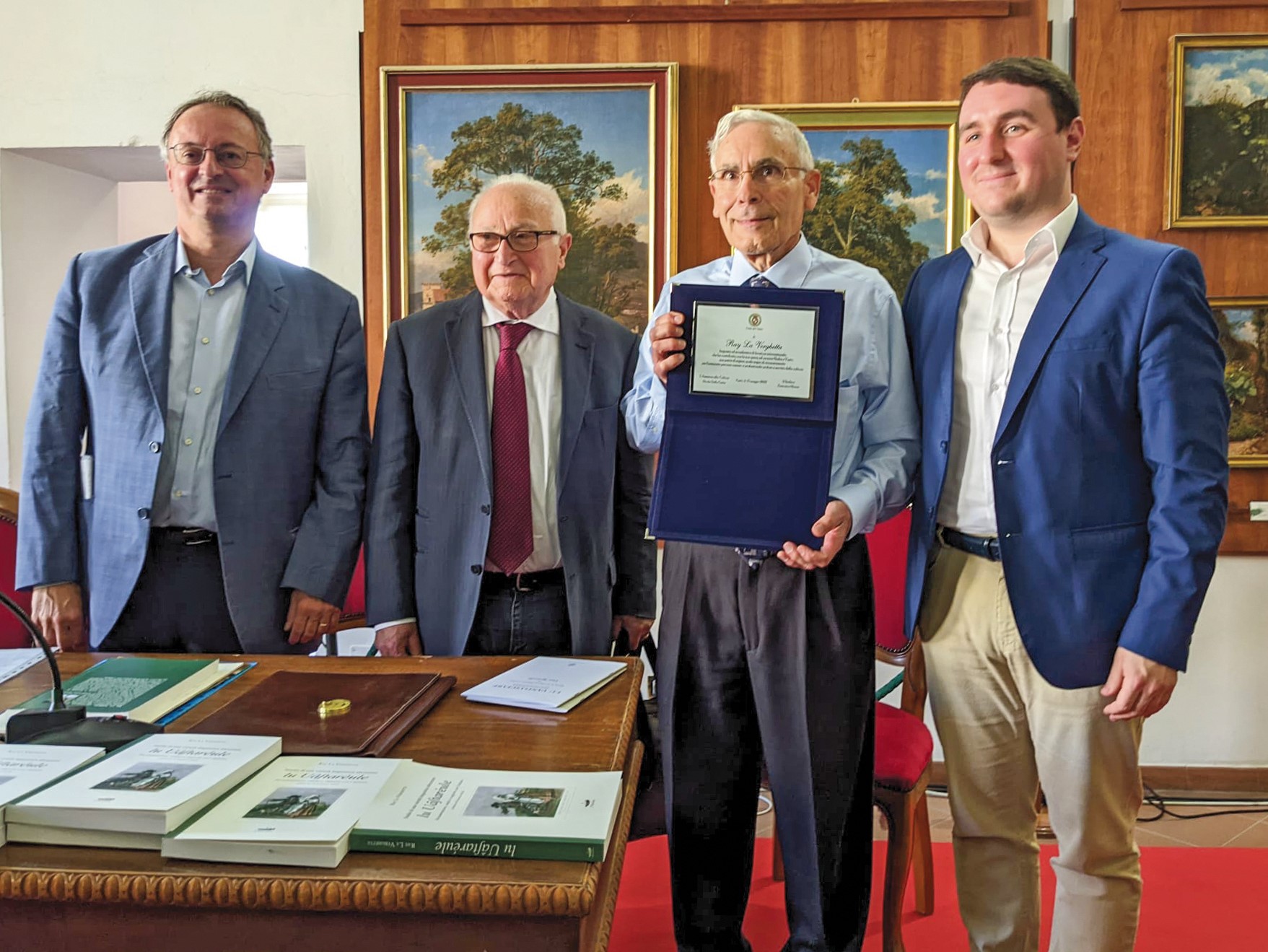
Vasto honored AMHS President Ray LaVerghetta for his contributions to the cultural enrichment of the city. Pictured at the presentation are: (left to right) Professor Francesco Avolio, who wrote the preface to Ray’s book, event moderator Nicolangelo D’Adamo, Ray and Cultural Advisor to Vasto Nicola Della Gatta, who made the presentation on behalf of the city.
Credit: Michele LaVerghettaAMHS President Ray LaVerghetta recently traveled to Italy to take part in a book-launching event, which took place in the city of Vasto, in Abruzzo. The event launched the publication of a book that Ray wrote on the variety of Abruzzese spoken in that city. His book, published by Il Torcoliere, is at once a linguistic documentation of a language/dialect at risk; a description of its grammar in a modern linguistic framework, and a discussion in layman’s terms of key linguistic concepts that shed light on the true nature of this linguistic variety and its relationship with Italian.
The book is titled: “Studio di una varietà linguistica abruzzese – Uâʃtaréule; Documentazione, Analisi e Rapporto con l’Italiano”. The presenter at the event was Professor Francesco Avolio, an Italian linguist and well-known expert on Italy’s central and southern dialects who wrote the preface to Ray’s book. Following Professor Avolio’s introduction of the book and subsequent analysis and commentary, Ray described his research and data collection for the book, summarized its principal sections, and referred to those aspects of the book that have linguistic relevance beyond the variety of Abruzzese in question. After the event, Ray signed copies of the book.
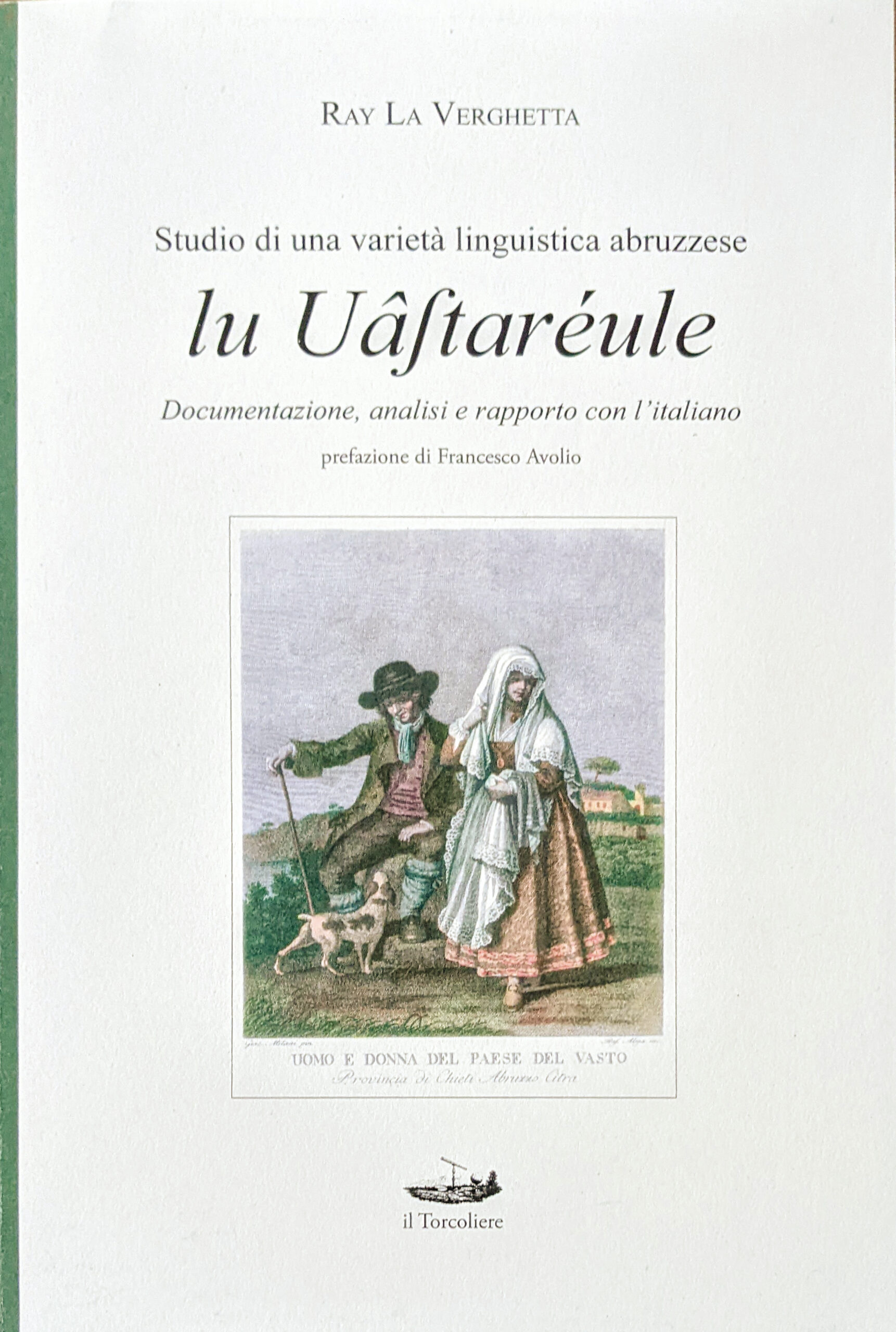
Ray’s book, titled “Studio di una varietà linguistica abruzzese – Uâʃtaréule; Documentazione, Analisi e Rapporto con l’Italiano.” 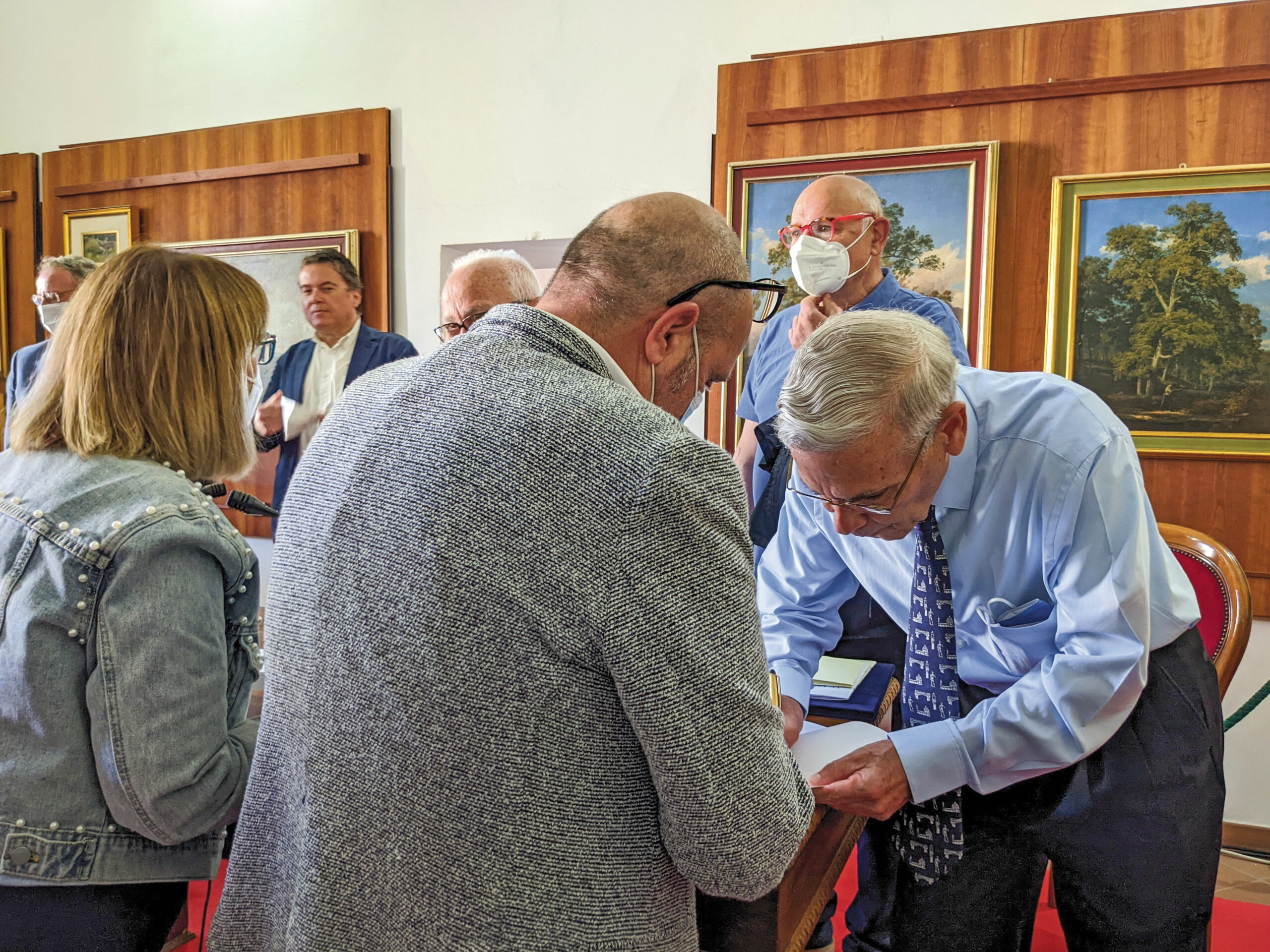
Ray LaVerghetta signing copies of his book for the enthusiastic audience.
Credit: Michele LaVerghettaThe event, held on May 13, took place in the exquisite conference room of Vasto’s magnificent Palazzo D’Avalos, a former palace looking out over the Adriatic and built on Roman and medieval foundations. The turnout was excellent and included members from both sides of Ray’s family in Vasto, friends and colleagues of Ray’s from Vasto and Rome, local language and dialect experts, and people interested in the topic who had seen the posters around Vasto publicizing the event.
The highlight of the occasion was the award that the city of Vasto bestowed on Ray. The Mayor of Vasto honored him for the contributions his work has made to the cultural enrichment of Vasto and Italy. Vasto’s Cultural Advisor was there to make the presentation. The award took on added meaning and sentiment because Ray’s grandparents were born and raised in Vasto. As one family member noted, it represented a kind of coming home or coming full circle. Ray’s family and friends were very proud of his achievement. Celebrating it with them added a personal element to what had been a busy preceding week of various meetings in Vasto, not to mention much work done beforehand. It was an exciting event, both for Ray and for those lucky enough to share it with him.
July/August 2022
-
Jim Croce: Popular Singer and Songwriter Had Abruzzo Roots
By Joseph “Sonny” Scafetta, Jr.

Jim Croce
Credit: Ingrid Jacobson Croce, 1972James Joseph Croce was born on January 10, 1943, in the Little Italy section in the south end of Philadelphia, Pa. His father was Giacomo Alberto Croce (April 14, 1914 – March 8, 1972) who had emigrated from the community of Trasacco (population 6,241 in the 2016 census) in the province of L’Aquila in the region of Abruzzo. His mother was Flora Maria Babusci (May 28, 1913 – December 22, 2000) who had emigrated from the city of Palermo in Sicily.
When Croce was young, his family moved to the adjoining suburb of Upper Darby where he graduated from the local high school in June 1960. He then studied for a year at the Malvern Preparatory School before enrolling in Villanova University where he majored in psychology. While there, he became a member of the Villanova Singers and the Villanova Spires. The latter group performed off-campus as The Coventry Lads. He earned his B.S. degree in Social Studies in June 1965.
Croce released his first album, Facets, in 1966 with only 500 copies, all of which sold. Later that year, he married Ingrid Jacobson in a traditional Jewish ceremony and converted to Judaism. He also enlisted in the Army National Guard in New Jersey and served on active duty for four months. After his release in early 1967, he got his first long-term gig at The Riddle Paddock Bar & Steak House in Lima in adjacent Delaware County, Pa., where he performed with his wife as a duo. In 1968, they moved to New York City and recorded their first album, Jim & Ingrid Croce, for Capitol Records. During the next two years, they drove more than 300,000 miles playing small clubs and college concerts promoting their album until she became pregnant . Their son, Adrian James, was born in September 1971. They then bought an old farm house in Lyndell in Chester County, Pa.
In early 1972, Croce signed a three-record contract with ABC Records which released two albums, You Don’t Mess Around with Jim and Life and Times. The singles, “You Don’t Mess Around with Jim,” “Operator,” “That’s Not the Way It Feels,” and “Time in a Bottle,” all received a fair amount of air play on radio stations nationwide. As a result, the family was invited in mid-1972 to move to San Diego, California, while keeping the farm house back in Lyndell. Croce first appeared on national television on American Bandstand on August 12, The Tonight Show on August 14, and The Dick Cavett Show on September 20 and 21. He then began touring the United States, singing on college campuses and at folk festivals.
In February 1973, Croce traveled to Europe, performing in London, Paris, Amsterdam, Monte Carlo, Zurich, and Dublin. In early July, his biggest single, “Bad, Bad Leroy Brown,” reached number 1 on the American charts. From July 16 through August 4, Croce performed in London where he sang “Lover’s Cross,” “Working at the Car Wash Blues,” and “I’ll Have to Say I Love You in a Song” from his upcoming album, I Got a Name. Upon returning to the United States, he went on tour again. On Thursday, September 20, 1973, he finished a concert at Northwestern State University in Louisiana. That evening which was foggy, he boarded a chartered Beechcraft aircraft at the regional airport in Natchitoches. Upon takeoff, the pilot failed to clear a tree at the end of the runway and the plane crashed. All six persons on board were killed, including Croce and his manager, Kenneth D. Cortese. Croce was 30 years old. He was buried in the Haym Salomon Jewish Memorial Park in Frazer near his farm house in Chester County. Croce was inducted into the Song Writers Hall of Fame in 1990.
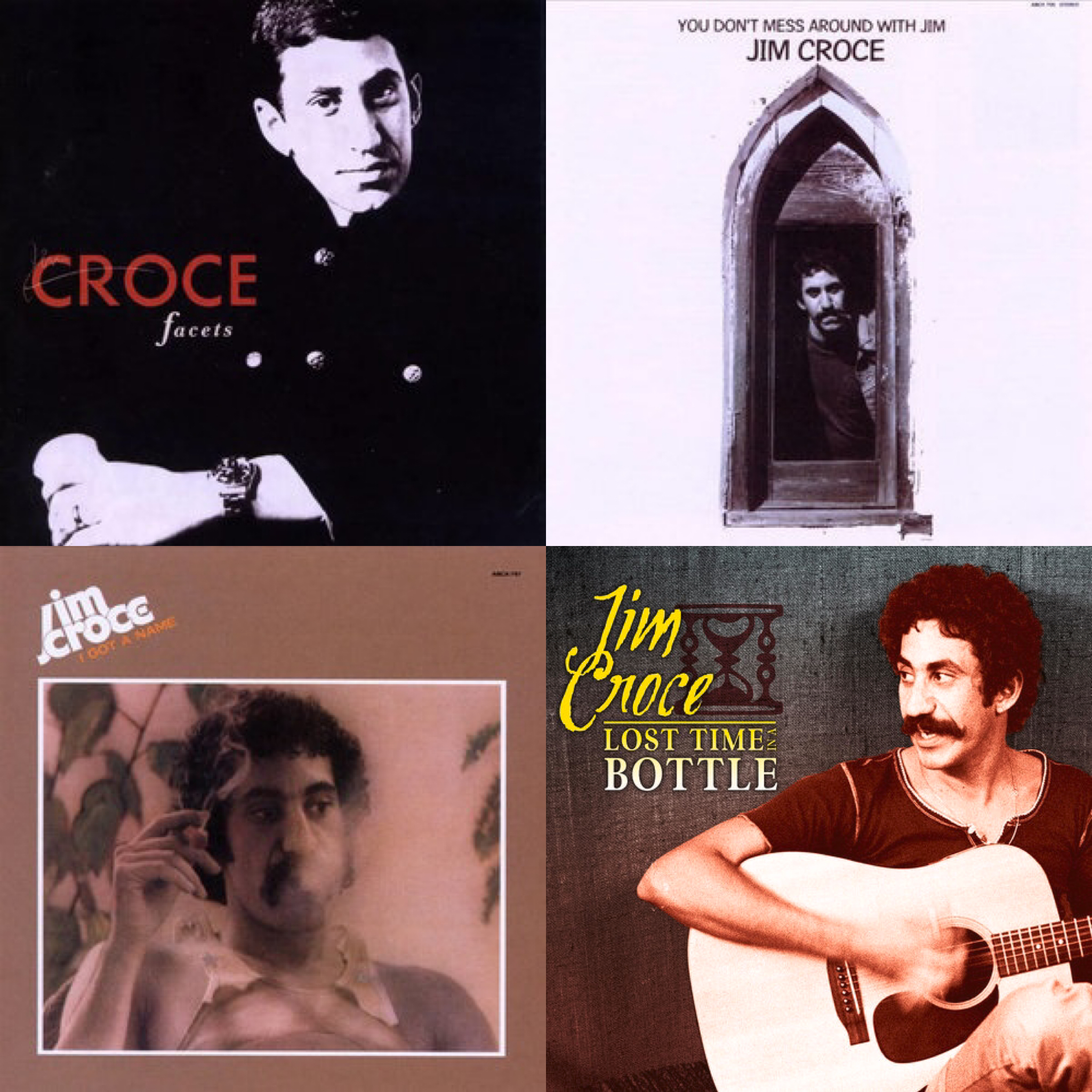
Sources, all accessed February 3, 2022:
Miles Ryan Fisher, “The Son of His Father’s Songs: The Story of Jim Croce,” Italian America Magazine, at pages 28-30, Winter 2022.
https://en.wikipedia.org/wiki/Jim_Croce
https://en.wikipedia.org/wiki/Trasacco
July/August 2022
